The role of a competitive track in marble racing
Competitive tracks are essential to professional marble racing, ensuring fairness, precision, and excitement for both participants and spectators. Unlike casual setups, these tracks are purpose-built for major tournaments like Marbula One and the Marble League, attracting thousands of fans.
Over time, they have evolved with advanced designs and dynamic features to keep the sport engaging. Their high-quality materials and precise layouts enhance performance and make competitive marble racing more thrilling.
Features of competitive tracks
Competitive tracks are meticulously designed to meet the high standards of professional marble racing, ensuring fairness and maintaining the excitement of the sport. Here are the key features that make competitive tracks stand out:
Precision design
Competitive tracks are engineered with exact measurements and angles to guarantee smooth and consistent marble movement.
- Tracks are designed to eliminate irregularities that could interfere with the race, ensuring that every marble faces the same conditions.
- Precision designs help emphasize skill and strategy, keeping races fair and exciting.

This level of detail ensures that the focus remains on the racers and their abilities, not the flaws of the track.
If you’re looking to create your own track with professional accuracy, check out this guide on building an indoor marble racing track to learn how to construct high-quality setups at home.
High-quality materials
Durability is a cornerstone of competitive tracks, which are built from long-lasting materials capable of withstanding repeated use.
- Common materials include plastic, wood, and PVC, each chosen for their strength and reliability
- High-quality construction minimizes wear and tear, ensuring consistent performance throughout tournaments.
These materials also contribute to the professional appearance of competitive tracks, enhancing the experience for spectators.
Standardized layouts
To maintain fairness, competitive tracks adhere to strict standards and regulations set by racing organizations.
- Dimensions, slope angles, and path widths are standardized to create a consistent racing environment
- Layouts are tested and approved to ensure all marbles have an equal chance to perform.
This standardization allows races to be compared across different events, adding to the credibility of professional marble racing.
Dynamic obstacles
Competitive tracks often include challenging features to test the races’ skill and strategy.
- Loops and ramps: Add excitement by requiring marbles to maintain speed and momentum.
- Barriers and spirals: Introduce complexity, encouraging marbles to adapt and navigate efficiently.
- Boost zones: Offer opportunity for sudden bursts of speed, adding unpredictability to the race.
These obstacles keep races dynamic, engaging both racers and spectators while showcasing the versatility of the marbles.
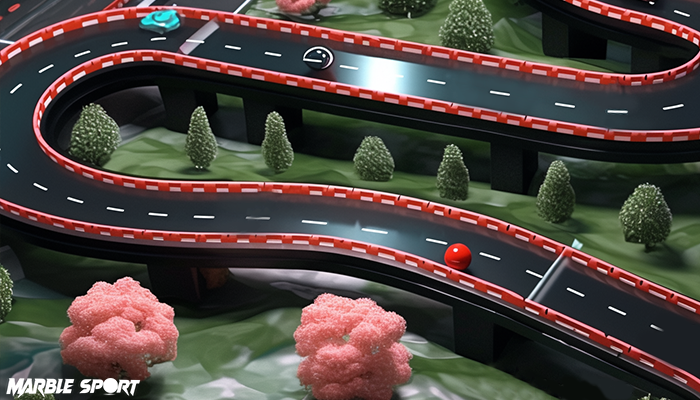
With their precision, durability, and creativity, competitive tracks are designed to deliver a thrilling and professional racing experience. These features set the stage for high-stakes competitions where every detail matters.
The role of competitive tracks in professional leagues
Competitive tracks are at the heart of professional marble racing leagues, setting the stage for thrilling races and enhancing the overall spectacle. The design and functionality are tailored to meet the demands of global events, ensuring that both participants and spectators enjoy an engaging and fair experience.
Official tournaments
Competitive tracks are the standard for major marble racing events
- Consistency and quality: Built to meet rigorous standards, they ensure fairness for all competitors.
- Testing and precision: Each track undergoes thorough testing to eliminate flaws and create a seamless racing environment.
- These circuits are pivotal in maintaining the creditability and professionalism of the sport.
Spectator appeal
Competitive tracks are designed with spectators in mind, marble racing is not only fair but also visually captivating.
- Stunning layouts: Intricate designs, vibrant colors, and dynamic elements like loops and spirals that keep audiences engaged.,
- Exciting race dynamics: Challenging features like boost zones or split paths create suspense and unpredictability, adding to the excitement.
- Professional lighting and camera setups highlight every detail, enhancing the viewing experience for fans watching live or online.
These tracks transform marble racing into a spectator-friendly sport, drawing in large audiences globally.
Team Representation
Competitive tracks often include customized elements that reflect the identities of the competing teams.
- Team colors and logos: Sections of the track may be themed to match the teams participating in the event.
- Themed zones: Tracks might feature elements tied to a specific team’s personality, such as a “forest section” for a nature-themed team.
- Visual branding: These features add a layer of storytelling, making it easier for spectators to connect with their favorite teams.
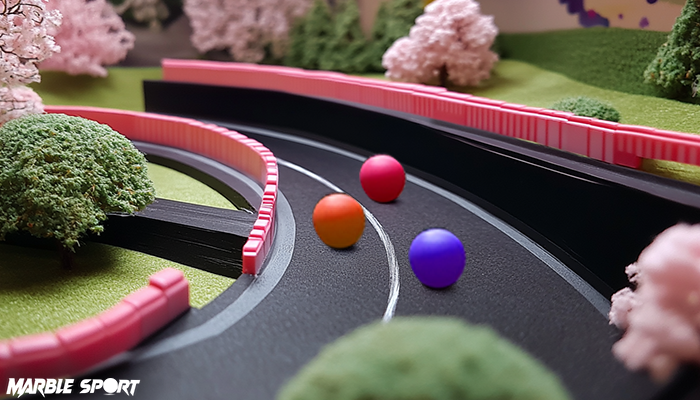
This personalization enhances the overall experience, creating a sense of connection and loyalty among fans.
Competitive tracks are more than just racing surfaces – they are the foundation of professional marble racing, blending functionality, aesthetics, and innovation. Their role in personal leagues ensures that each event is not only fair and exciting but also an unforgettable experience for everyone involved.
Benefits of competitive tracks
- Consistent standards: Competitive tracks are meticulously designed to ensure uniformity, eliminating variables that could lead to unfair advantages and allowing skill and strategy to shine.
- Enhance viewer experience: Features like sharp turns, acceleration zones, and intricate layouts captivate audiences, making races thrilling and immersive.
- Adaptability: These tracks are versatile – easily reconfigurable or adaptable to various events, providing endless opportunities for fresh and engaging racing scenarios.
Challenges of competitive tracks
While competitive tracks offer a thrilling and standardized racing experience, they come with their own set of challenges. These issues often stem from the need to balance precision, practicality, and creativity. Below are some of the key hurdles faced when designing and maintaining competitive tracks:
Cost of precision
Building competitive tracks involves high-quality materials and precise engineering to ensure durability and fairness. These tracks must meet rigorous standards, which often makes them significantly more expensive than casual or homemade setups. This financial barrier can be challenging for smaller events or individual organizers.
Logistic complex
Competitive tracks require professional assembly to ensure accurate alignment and stability, often involving intricate designs with tight tolerances. Transporting these tracks to different venues demands specialized equipment and meticulous planning, increasing the logistical workload and costs.
Limited design flexibility
Strict design standards are often enforced in competitions to maintain consistency and fairness. While this ensures a level playing field, it limits creative freedom in track layout, making it harder to experiment with unconventional designs or introduce unique features without compromising competitive integrity.
Famous competitive track events
Competitive marble racing has captured the imagination of fans worldwide. Events showcase not only the thrill of racing but also the artistry and innovation behind the track designs. Here’s a look at some of the most iconic and unique competitive track events that continue to push the boundaries of marble racing.
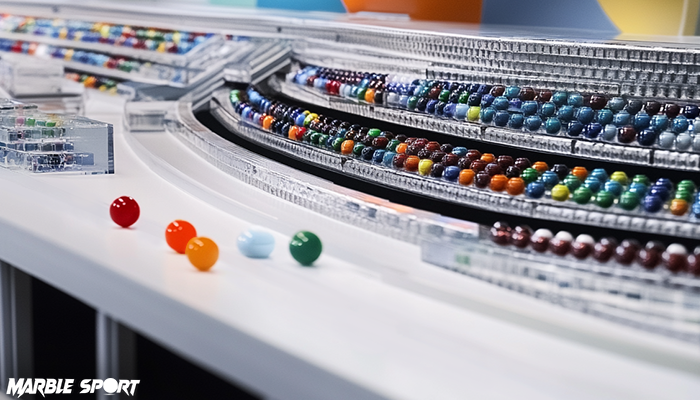
Marble league tracks
The Marble League (formerly known as the Marble Lymmpics) is a premier event featuring meticulously crafted tracks tailored to each race’s theme. These tracks often incorporate creative elements and ramps, funnels, and themed decorations that align with specific events such as sprint races, relay courses, and obstacle challenges.
Marble League tracks prioritize both entertainment and precision, offering diverse layouts that test marble speed, strategy, and endurance.
Marbular One circuits
Inspired by Formula One racing, Marbula One circuits are designed for high-speed, action-packed races. These tracks feature long straights, tight chicanes, and elevation changes that mimic the technical modifications of professional motorsport.
Dynamic features such as booster zones, hairpin turns, and multi-lane sections ensure edge-of-your-seat excitement for fans and competitors alike. Marbula One has set the standard for competitive marble racing with its fast-paced circuits and intense commentary.
International marble racing championships
Outside the well-known leagues, international marble racing championships are gaining popularity. These events often bring together racers from different countries, each showcasing their marble racing expertise.
Tracks in these championships stand out because of their innovative use of materials and cultural themes, reflecting the unique style of their host regions. From sand tacks in desert-inspired races to modern indoor circuits, these championships expand the scope of competitive marble racing.
Specialty charity events
Charity-based marble racing events introduce tracks designed to maximize audience engagement and fundraising efforts. These tracks often feature elaborate structures such as spirals, tunnels, and interactive elements that invite viewer participation.
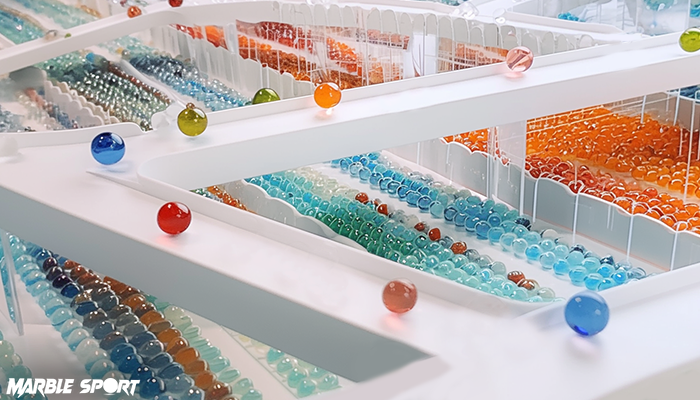
Some events even allow donors to sponsor marbles or suggest track modifications, making these races both competitive and community-driven.
Custom invitational races
Custom-built tracks for individual races are gaining traction in the marble racing world. Enthusiasts and independent organizers often craft unique tracks for one-off events that blend creativity with competition. These tracks may include experimental features like loop-the-loops, split paths, and cascading water elements, pushing the limits of what marble racing can achieve.
Virtual marble racing tournaments
With the rise of digital platforms, virtual marble racing has become a phenomenon. Simulated marble races use sophisticated algorithms and realistic track designs to replicate the physics and excitement of real-world racing. Virtual tournaments allow fans to compete and interact, bringing competitive marble racing to a wider audience.
Youth and community competitions
Local youth leagues and community-organized marble racing events are also making their mark. These events often involve handcrafted tracks built with household items or natural materials, offering a charming and accessible approach to competitive racing. While smaller in scale, they capture the same excitement and innovation seen in larger competitions.
From globally recognized leagues like Marble League and Marbula One to grassroots and specialty events, competitive marble racing offers endless variety. Each track brings its challenges and thrills, contributing to the growing popularity of this unique sport.
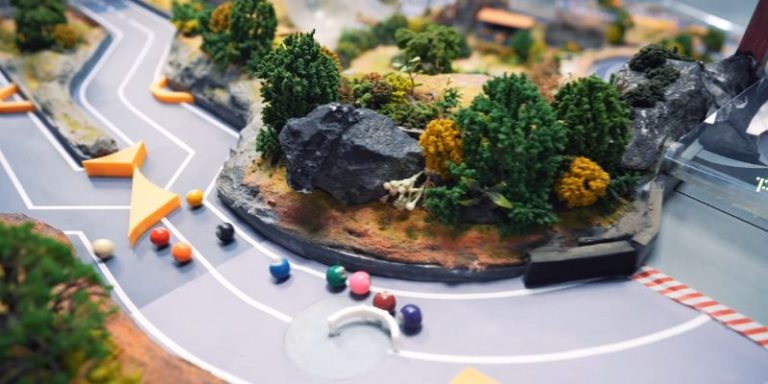
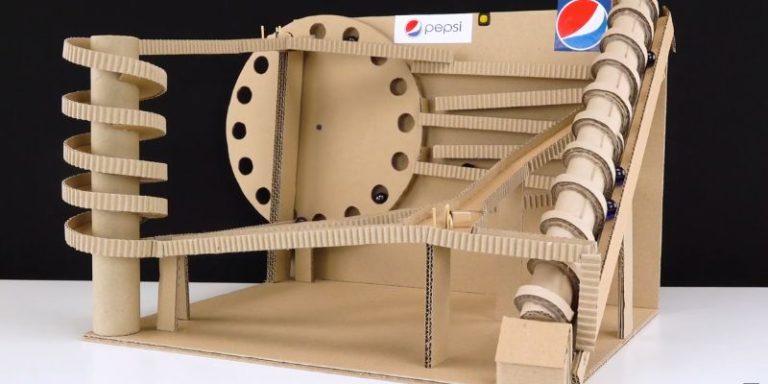

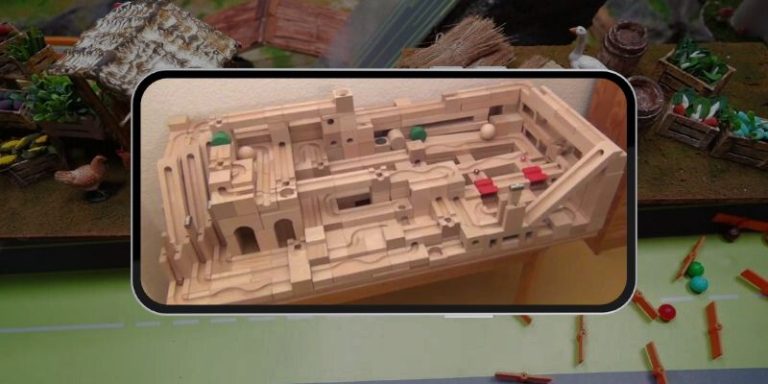
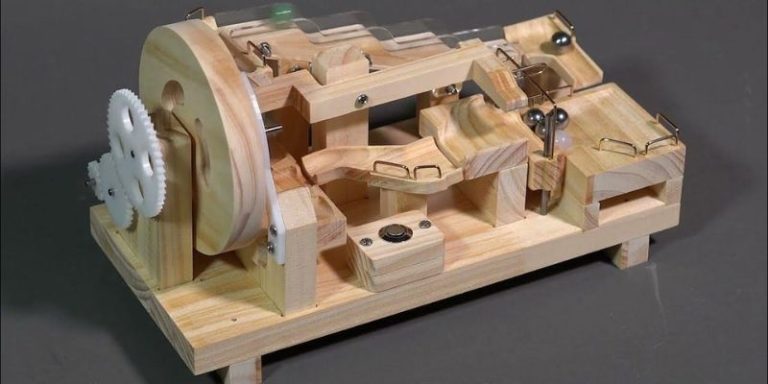

One Comment